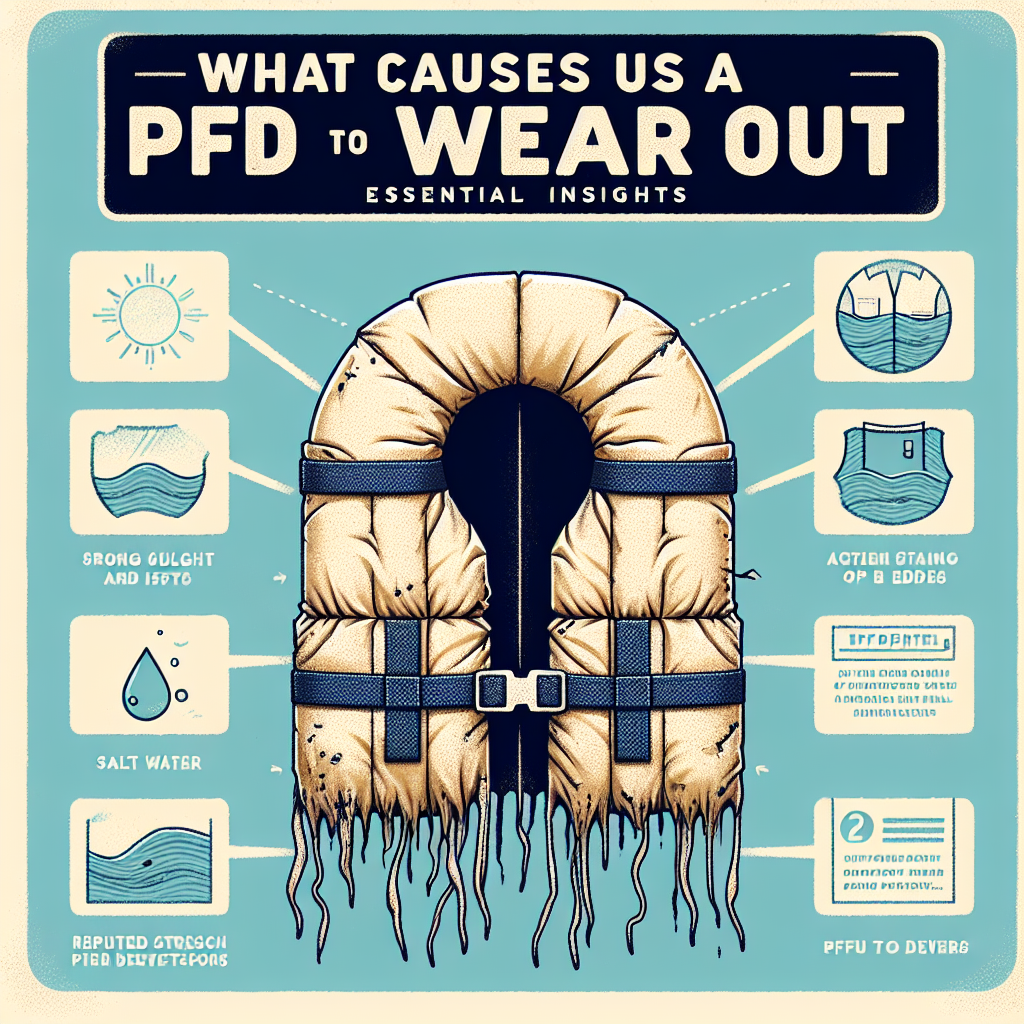
Blog
- Understanding the Lifespan of Personal Flotation Devices
- The Impact of Material Degradation on PFDs
- How Moisture and Mildew Affect PFD Performance
- Frequency of Use and Its Consequences
- Storing Your PFD Properly to Prolong Its Life
- Regular Inspection and Maintenance: A Key to Longevity
- Replacement Recommendations: Knowing When to Let Go
What Causes a PFD to Wear Out Over Time? Essential Insights
When considering the longevity of personal flotation devices (PFDs), it’s crucial to understand what causes a PFD to wear out over time. These essential safety items are a staple for anyone engaging in water-related activities, from boating to fishing, and even for professional uses like coast guard duties. By delving into the factors that lead to their deterioration, we can better care for these devices and ultimately enhance our safety on the water.
Understanding the Lifespan of Personal Flotation Devices
A PFD, commonly known as a life jacket or life vest, is designed to keep the wearer afloat in water, preserving life until rescue or until the wearer reaches safety. The inherent value of a PFD in saving lives is immeasurable, but like any used equipment, it does not last forever. Several factors can accelerate the aging process of these safety tools, affecting their buoyancy and structural integrity.
The Impact of Material Degradation on PFDs
The materials used in the manufacture of PFDs are selected for durability and buoyancy. Typically, these include foam (such as polyethylene or polyvinyl chloride) and textiles. Over time and with regular exposure to environmental elements, these materials can begin to break down.
Sunlight and UV Exposure:
Extended exposure to sunlight can be particularly detrimental. Ultraviolet (UV) rays can weaken the fibers of the PFD’s cover and degrade the foam, reducing the gear’s effectiveness and lifespan.
Chemical Exposure:
Saltwater and pool chemicals such as chlorine can also have a harsh effect on PFD materials. These chemicals can eat away at the fibers and foam, causing them to become brittle and less buoyant.
Physical Wear and Tear:
Regular use naturally leads to wear and tear. Activities that cause stretching, abrasions, or punctures can compromise the integrity of a PFD. Additionally, improper storage and care, such as folding or compressing the PFDs, can also lead to material breakdown.
How Moisture and Mildew Affect PFD Performance
Moisture is a constant challenge for water safety gear. PFDs often don’t have enough time to dry out properly between uses, leading to the growth of mildew and mold. This not only produces a foul smell but can also damage the fabric and internal foam, reducing its buoyancy and potentially causing it to fail when most needed.
Proper Drying Techniques:
Ensuring that PFDs are fully dried after each use is crucial. Hang them in an area with good airflow and, if possible, out of direct sunlight which can exacerbate material degradation through UV exposure.
Frequency of Use and Its Consequences
The more frequently a PFD is used, the quicker it will wear out. Regular users should consider this fact and regularly inspect their PFDs for signs of wear or damage. For those using PFDs less frequently, it’s still essential to check for aging signs from environmental factors and storage conditions before use.
Storing Your PFD Properly to Prolong Its Life
Storage conditions greatly influence the lifespan of a PFD. High temperatures and humidity can accelerate the degradation process, as can storing them in compressed spaces or under heavy objects that could crush the foam. Ideally, PFDs should be stored in a cool, dry, and dark place to minimize risk and extend their useful life.
Regular Inspection and Maintenance: A Key to Longevity
Routine inspections are critical to ensuring the continued efficacy of your PFD. Checking for rips, tears, mold, mildew, and signs of UV damage can prevent a false sense of security regarding the device’s condition. It’s recommended to conduct a thorough inspection at least once per season and after any incidents that could compromise the device’s structure.
Replacement Recommendations: Knowing When to Let Go
Despite our best efforts, there comes a time when a PFD must be replaced. As a rule of thumb, most manufacturers suggest replacing personal flotation devices every 5-10 years, depending on usage frequency and storage conditions. However, any signs of significant wear, tear, or damage mean it’s time to invest in a new one promptly.
Explore High-Quality PFD Options
At Coveti, we recognize the importance of safety and reliability in water sports and activities. Explore our curated collection of top-tier personal flotation devices designed for durability and safety at Coveti’s PFD Collection.
By understanding what causes a PFD to wear out over time and taking proactive steps in care, maintenance, and replacement, we can ensure safety on the water in any situation. For additional insights and resources on PFD care, visit expert fashion editor and stylist Gemma Deeks’ website here. You can also find further detailed guidelines and the latest research on PFD maintenance and care on trusted platforms like Vogue and Elle.
Safety on the water is no accident. It’s about preparation, knowledge, and having the right equipment in top condition. By treating your PFD with the same care you’d expect of it in an emergency, you’re setting the stage for not just fun, but safe water adventures.
















